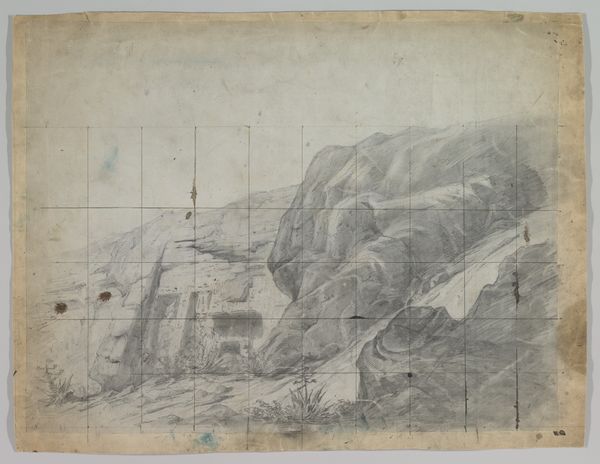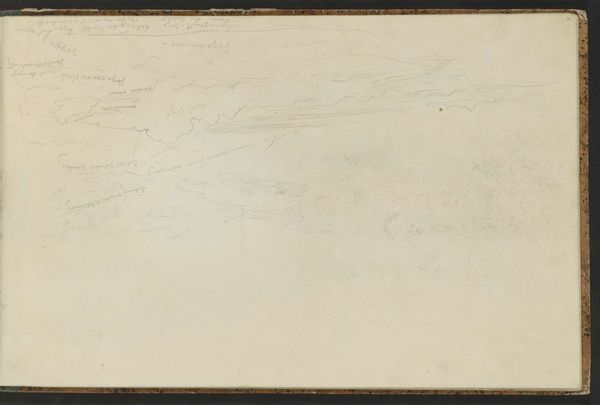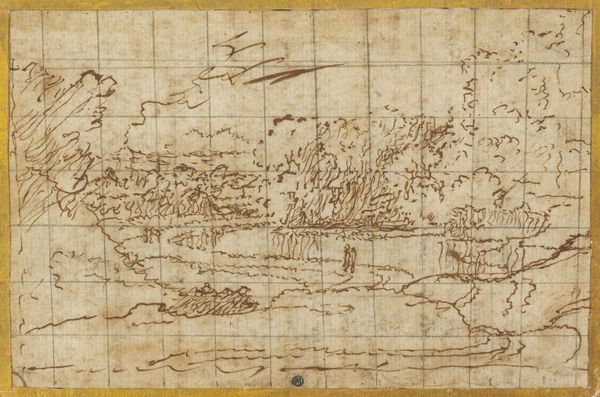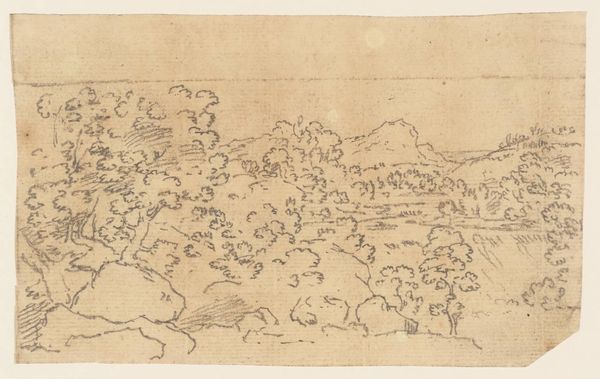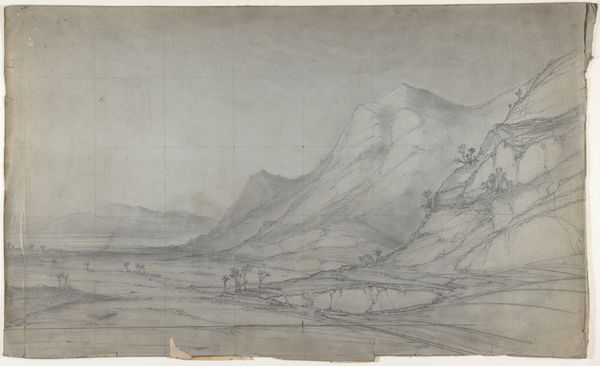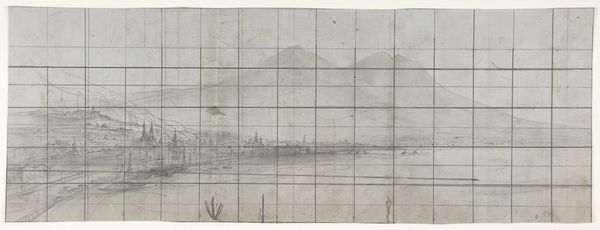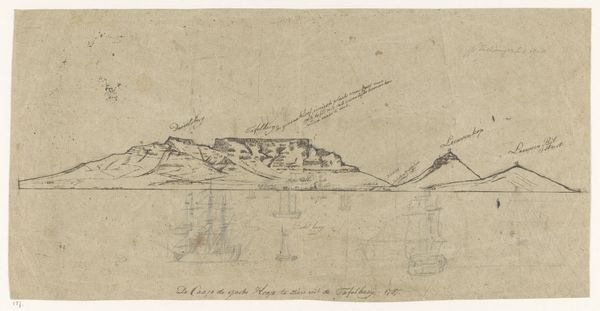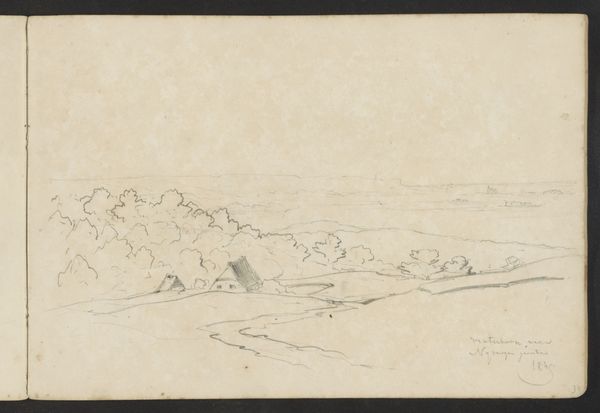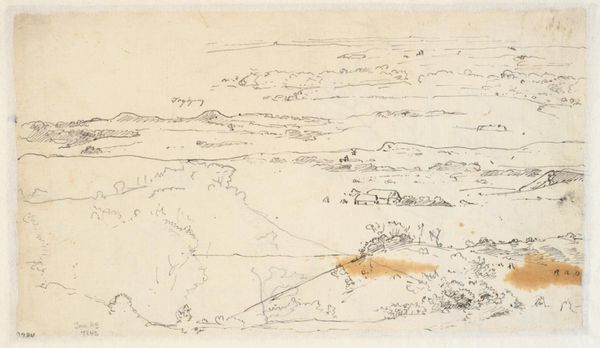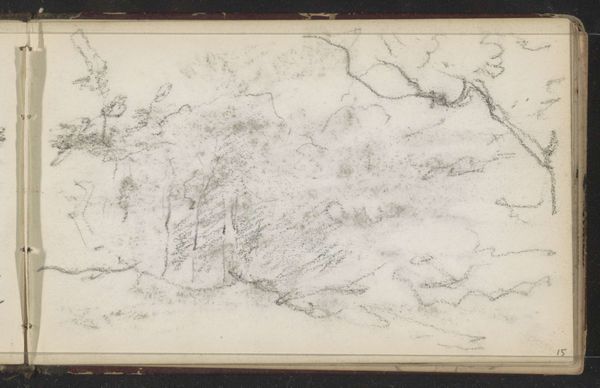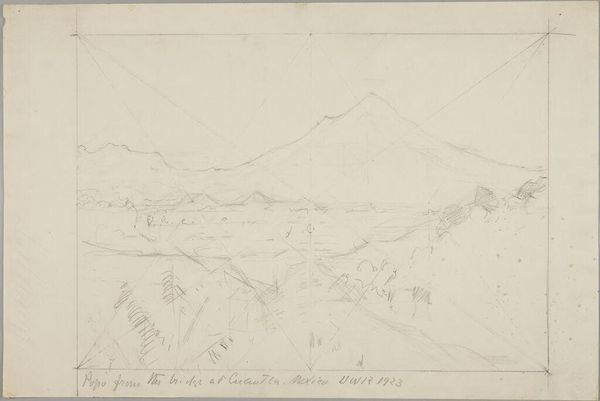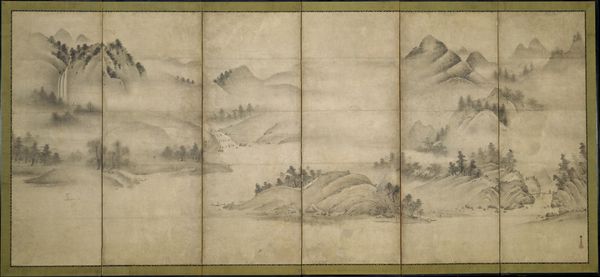
Dimensions: Sheet: 7 1/2 × 18 7/8 in. (19 × 48 cm)
Copyright: Public Domain
Curator: This delicate pencil drawing from 1782 is John Robert Cozens's "View of Vesuvius," currently held at the Metropolitan Museum of Art. It's quite striking. Editor: It’s like a half-remembered dream of Italy. Look at the very fine texture of the pencil work, barely there on the page. Was the grid part of the original drawing? Curator: Indeed, the grid is original. Cozens likely used it as an aid for accurately capturing the scene’s proportions and transferring the image to a larger work. It also represents the prevailing artistic conventions that favored accurate documentation of nature and classical ruins among other tropes. Editor: It is so interesting to think about the labour and material constraints inherent in this pencil on paper technique from the late 18th century, such different modes and approaches. Pencil itself was already manufactured, not artisanal anymore. Curator: The drawing also reveals the important role of patronage at the time. Cozens made the work while on a trip funded by wealthy British tourists on the Grand Tour, which very much shaped the perception of sites such as Vesuvius and the Bay of Naples and influenced their public image as prime landmarks of natural grandeur, antiquity, and romantic beauty. Editor: All rendered with such subtlety! Even with its muted tones, you still feel the looming presence of Vesuvius itself, like a slumbering giant waiting to erupt. It emphasizes the social hierarchy of tourism back then when art became so intertwined with commercial pursuits and how landscapes themselves were valued commodities, experiences to acquire and consume through viewing and through collecting. Curator: Absolutely, it’s a representation deeply embedded within social and cultural forces. This drawing embodies the aesthetic and ideological underpinnings of Romanticism during the late 18th century, a period that saw a marked emphasis on individual experience and sentiment toward landscapes, so central to understanding Cozens’s approach. Editor: Yes, but even in its “finished” state we see material processes that emphasize something simple that resonates powerfully even today. And just imagine the view he chose—powerful, scary. And he makes it so serene here. Curator: So, perhaps this piece enables us to appreciate both the delicate balance of artistic genius, societal expectation, and the simple appeal of landscape tradition. Editor: And that even a very light touch with pencil can convey so much power through a simple scene and readily accessible materials.
Comments
No comments
Be the first to comment and join the conversation on the ultimate creative platform.
